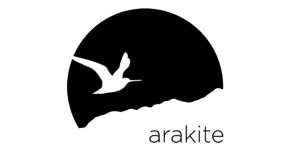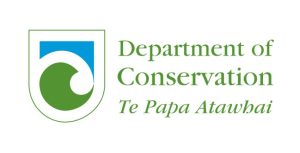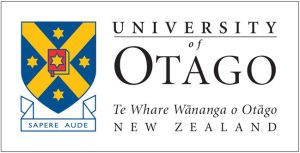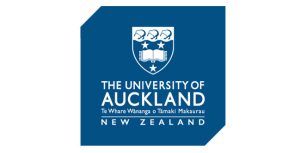Dr Madam Tin Cho Ma
Saturday 24.08.19 Session 8 Dr Madam Tin Cho Ma session on “Bringing Malay minorities into the fold: Adaptation and Survival”

Bringing Malay Minorities into the Fold: Adaptation and Survival
Dr Ma Tin Cho Mar is a senior lecturer in the Department of Southeast Asian Studies at the Faculty of Arts and Social Sciences, University of Malaya, studying young entrepreneurs in Southeast Asia, and the region’s global economic relations, as well as ASEAN member states’ non-traditional security issues. She traveled from Malaysia to present her paper, and to read that of Dr. Wan Salleh Wan Ibrahim. Her work presented for this wananga regards the peopling of the Pacific in context with the Austronesian Diaspora.
Abstract:
This study is an attempt to work and document the spatial distribution of the Malay Minorities voyaged and journeyed along the Pacific coastline over the centuries and Polynesian settlement, adaptation and survival.
Besides, this paper addresses rationally regarding the most recent part of history dates starting from around 4,500 ybp (see Chambers, 2006) and forms part of the greater ‘Austronesian Diaspora’ (Simanjuntak et al., 2006). The common Austronesian ancestors of Malays and all Polynesians (i.e. including Maori) are hill tribe aboriginal people of Taiwan (Amis, Atayal, Paiwan etc.) who migrated southwards via the Batanes Islands and Philippines etc. according to the ‘Out of Taiwan’ archaeological hypothesis (Bellwood and Dizon, 2005). The onward migration process was dubbed ‘The Express Train to Polynesia’ by Diamond (1988) but is perhaps better captured by the ‘Slow Boat Model’ (see Kayser et al., 2000) and later elaborations such as the ‘Slow Boat from Asia Model’ (Kayser et al., 2006 and 2008).
Further southward movement brought the voyagers to Borneo and Sulawesi. From here they split with one branch going west and eventually reaching Malaysia and even Madagascar. The other branch went east towards the Pacific. The origins of Proto- and Deutero-Malays have been fully described by Edinur et al. (2009). In brief this episode began between 4500 and 3500 ybp as Austronesian speakers moved on to Central Java and Eastern Indonesia. The Proto-Malay population formed in Peninsula Malaysia via migration across the Straits of Malacca 3500 to 2500 ybp. Continued south and westward movement eventually (by c. 3300 ybp) brought the other branch of the Austronesian voyagers into contact with the Papuan language-speaking descendants of a second lineage. These were people who had been resident in the general Papua New Guinea (PNG) area for more than 20,000 years. In contrast with events in Malaysia, the result of this interaction was widespread genetic and linguistic replacement in the settled indigenous populations in situ. This gives rise to the long-recognised differences between coastal and highland peoples in PNG (Stoneking et al., 1990) and has left clear signals in their descendant gene pools (Friedlaender et al., 2008 and Kayser et al., 2008).
A secondary data on the relevant history data would be collected. This study methodology combined two complementary approaches for identifying, analyzing and understanding patterns of knowledge sharing within complex social systems. Furthermore, the paper discusses the significance attached to the aspects of human migration in along the Pacific coastline.
Keywords: Malays, Austronesians, Voyagers, Minorities, Adaptation, Survival and Human migration.
- Introduction
The outstanding aspect of the origin of the Malay is concerning their voyaging, navigating and migration along the Pacific coastline. Encyclopedia Britannica defines the Malay or Orang Melayu (“Malay People”) as any member of an ethnic group the Malay Peninsula and portions of adjacent islands of southeast Asia, including the east coast of Sumatra, the coast of Borneo, and smaller islands that lie between these areas. Blust et al 1986 briefly stated, “Malay is one of the races in the family of a very broad ethnic group known as the Malayo-Polynesian or Austronesian. Among the tribes in this family are Malay, Javanese, Bugis, Sudanese, Maori, Hawaii, Fiji, and many others from Southeast Asian races too. As such, Myanmar citizens of Malays are the Moken and the related Moklen (Salaone) group. They are found in the Mergui Archipelago of Myanmar and the islands of south western part of Thailand. One of the other two subtypes are the Orang Laut (Sea People) are seen in Riau-Lingga Archipelago, Batam, Eastern Sumatra of Indonesia and Southern Johore of Malaysia.
The last group is the Bajau Laut, largest of all groups, live in Sulu Archipelago of the Philippines, eastern Borneo, Sulawesi and islands of eastern Indonesia. Pashu in Myanmar is likely to be the corrupted word (or a different slang) in Myanmar language from- Bajau. That Bajau tribe is the largest Muslim indigenous group in Sabah (East Malaysia). They are known as Sea Gypsies or Sea Nomads. Malays in Myanmar or (called Pashu of Burma), are almost same as but a little bit different from the Malays in Southern Thailand, East and West Malaysia, Singapore, Brunei, Philippines and Indonesia. The Malay region is very wide. This is supported by Wallace, an expert in anthropology and natural history from Britain who wrote The Malay Archipelago (1863) mentioned, “the Malay archipelago as the whole South East Asia that forms a triangle, starting from Nicobar Island in the East Sea to the Solomon Islands in the South East, and of Luzon in the North to Rotti near the island of Timor in the South”. He divides these vast areas into several groups: Indo-Malaya Islands, Timor Islands, Maluku and Papua islands (Shaharir, 2000).
- The Word “Malay” and its Existence
There are many records discussing the origin of the Malay name itself. Among the earliest record found is a Ptolemy’s map as early as the first AD which also name it as Golden Peninsula, also known as Maleu-Kolon (Gerini, 1909). In addition, among the earliest record of the origin of the Malay name is about a Malay Kingdom that existed since the forth century AD in the North Sumatra, known as Moloyu is an independent government believed to exist since the fourth century AD before captured by a Srivijaya empire (Cordier et.al, 1920).
Then these were followed by the records from the China Dynasty like Dan Ming, which obviously mentioned about the Malays. Although the way of pronunciation of the word “Malay” deferred to the Chinese accent. Amongst are Bok-la-yu, Mok-la-yu, Ma-li-yu-er, Oo-lai-yu and Oo-lai-yu.
Srivijaya was the first Malay Empire founded in the Malay Archipelago. It once conquered Palembang and reached the peak of its glory having power over entire archipelago, later and towards the medieval and late medieval time (Yaapar, 2014). Among the earliest Malay sultanate that existed on the peninsula is the Sultanate of Kedah, which is one of the oldest sultanates in the world.
3.0 Polynesian Migration
Over the years, the Southeast East Asia theory is the most self-sustainable one. So, if the Polynesians’ homeland is somewhere near Indonesia, why did they take immense efforts to migrate to the distance islands amidst the Pacific Ocean. Historians cannot pinpoint the reason for this migration, although one can assume the reason might be the same one as in other migrations: tribal wars, epidemic diseases, natural disasters, or the eagerness to find something new.
According to Ivanof (2004: 330), the Malays were the first to settle on the Tenasserim’s littoral at least as far as the town of Bokpyin and into the islands. Coastal fishermen on the littoral, they reproduced the village and economic structures of the Malay Peninsula (the most important settlement is still to be found not far from Kawthaung, in the village of Pulotonton). In the islands they specialized in piracy, however to a lesser extent than islands in the Malacca Straits. The Mergui Archipelago’s pirates were likely at the extreme edge of the slave raiding that was perpetrated in all the Malay Archipelago. Still, according to Ivanof (2004 : 330), the Malay are closely associated with slave raiders and merchants; in Moken, the term and points both to the action of capturing slaves and the fact of being Malay.
On the other hand, the Mon were believed to be one of the earliest peoples of Indochina. They founded some of the earliest civilizations there, including Dvaravati in Central Thailand (whose culture proliferated into Isan), Sri Gotapura in central Laos (modern Sikhottabong, Vientiane Prefecture) and Northeastern Thailand, Hariphunchai in Northern Thailand and the Thaton Kingdom. They were the first receivers of Theravada missionaries from Sri Lanka, in contrast to their Hindu contemporaries like the Khmer and Cham peoples. The Mon adopted the Pallava alphabet and the oldest form of the Mon script was found in a cave in modern Saraburi dating around 550 AD. Though no remains were found belonging to the Thaton Kingdom, it was mentioned widely in Bamarand Lanna chronicles. The legendary Queen Camadevi from the Chao Phraya River Valley, as told in the Northern Thai Chronicle Cāmadevivaṃsa and other sources, came to rule as the first queen of Hariphunchai (modern Lamphun) kingdom around 800 AD.
After 1000 AD onwards the Mon were under constant pressure. With the Tai peoples migrating from the north and Khmer invasions from the east, the Mons of Dvaravati gave their way to the Lavo Kingdom by around 1000 AD. Descendants of the Dvaravati Mon people are the Nyah Kur people of Isan. The Mon were killed in wars, transported as captives, or assimilated into new cultures. The Mon as an entity virtually disappeared in Chao Phraya Valley. However, Hariphunchai kingdom survived as a Mon outpost in northern Thailand under repeated harassment by the Northern Thai people. In 1057, King Anawrahta of Pagan Kingdom conquered the Thaton Kingdom. The Mon culture and the Mon script were readily absorbed by the Burmese and the Mons, for the first time, came under Bamar rule. The Mon remained a majority in Lower Burma. Hariphunchai prospered in the reign of King Aditayaraj (around early twelfth century), who allegedly waged wars with Suryavarman II of Angkor and constructed the Hariphunchai stupa. In 1230, Mangrai, the Northern Thai chief, conquered Hariphunchai and the Mon culture was integrated into Lanna culture. The Lanna adopted the Mon script and religion.
Even geographically, for White et al (1922) the Tenasserim marks the fusion between Myanmar and Malaysia, according to its ecological similarities to the latter country. As he wrote, the Myanmar is the country of the peacock, while in the Tenasserim, like in Malaysia, the pheasant dominates (ibid: 27–28). Other animals common in Malaysia, such as the pangolin and the mouse-deer, are found in this region. As far as the flora are concerned, the resemblances to Malaysia are significant, with the kanyan for example that supplants the teak, and the presence of zalacca (Zalacca rumphii ), indispensable for the construction of the kabang , the boat of the Moken sea-nomads. Besides, the Moken, the Malays were in the majority of those frequenting the islands of the Mergui Archipelago. Even though the border was negotiated between Siam and the British Empire in the nineteenth century, the entire region remained a transnational borderland with limits situated inside the national territories that designated cultural and geographic elements more than administrative ones. Consequently, a cultural border existed between paddy states and thalassocracies (maritime realms), rice culture and commerce, continental and insular Southeast Asia. This border separated central and lower Burma from the Malay Peninsula, including the south of Moulmein and the Mergui Archipelago, this in spite of the national official border.
- The Assessments on Malay History
The views of the Malays from the Malays’ eyes are not as much as the outsiders because literacy was something new to the Malay world. Besides, the Malays who wrote about their people during the colonial time and earlier than that were heavily influenced by telling myths. Thus, the written work was not authentic and genuine to describe the real survival of Malays times passed by. Bellwood et al. 1995; Swadling 1997b show that there is close culture-historical relationship between the indigenous people of island Southeast Asia and Pacific. Indeed, the great Austronesian language family spans both regions. However, island Southeast Asia has had a more complex historical overlay of cultural influence from the Indian subcontinent, which is not shared with the islands east of the Moluccas in Eastern Indonesia, and this has partly influenced the separateness of geographically focused scholarly traditions.
- The Linguistic Evidence
According to Asmah et al (1997), the indigenous languages of the whole of Southeast Asia belong to several different stocks. These are Austronesian, Pupuan, Tai-Kadai, Austroasiatic and Tibeto-Burman. The Austronesian stock is most widely spread all over the Southeast Asian islands, Peninsular Malaysia, the hills of Hainan and Taiwan (Formosa). A few of these languages are also found in Kampuchea. The Papuan family of languages is only in New Guinea. The Austroasiatic family consists of the Mon-Khmer and Munda groups of languages. The aboriginal languages of Peninsular Malaysia (with the exception of Jakun and Temuan which are dialects of Malay) and Vietnamese belong to, the Mon-Khmer group. In the Tai-Kadai group are Thai, Lao and various other languages found in Thailand and Laos. The members of Tibeto-Burman are Burmese and various other languages of Burma. And a boat of Moken (Salone or Salung or Mawken or Morgan), are an Austronesian ethnic group with about 2,000 to 3,000 members who maintain a nomadic, sea-based culture. Their Malayic, or proto-Malay language is distinct from the surrounding Malayan languages.
Austronesian languages are spoken in Brunei, Cambodia, Chile, China, Cook Islands, East Timor, Fiji, French Polynesia, Guam, Indonesia, Kiribati, Madagascar, Malaysia, Marshall Islands, Mayotte, Micronesia, Myanmar, Nauru, New Caledonia, New Zealand, Niue, Northern Mariana Islands, Palau, Papua New Guinea, Philippines, Samoa, Solomon Islands, Suriname, Taiwan, Thailand, Tokelau, Tonga, Tuvalu, USA, Vanuatu, Viet Nam, Wallis and Futuna. The total number of speakers of Austronesian languages is estimated at 311,740,132 with a median of 3,384 speakers per language referring to Wikipedia. The existence of the Austronesian language family was first discovered in the 17th century when Polynesian words were compared to words in Malay. Despite extensive research into Austronesian languages, their origin and early history remain a matter of debate. Some scholars propose that the ancestral Proto-Austronesian language originated in Taiwan (Formosa), while other linguists believe that it originated in the islands of Indonesia. The Austronesian language family is usually divided into two branches: Malayo-Polynesian and Formosan. The Malayo-Polynesian branch is by far the largest of the two. It is traditionally divided into two main sub-branches.
4.2 Navigation at Sea
While maintaining course at sea Polynesian navigators used sophisticated star compasses to track star paths to target islands. The star paths functioned according to fundamental principles of astronomy, the simplest use of which entailed the observation of horizon and zenith stars. Horizon stars rise in the east and set in the west at the same point on the horizon year-round. Their only variation occurs in the time at which they rise and set; being four minutes later each day so that a star rising at nine in the evening will rise in the same position at nine in the morning six months hence.
Courses were set by following an observable sequence of stars rising in line with the bearing of the desired destination. A star was first utilized when already slightly above the horizon to avoid problems of cloud and haze. As it rose and moved off across the sky, another star rising in the same position was selected. Generally speaking, equatorial stars and constellations were able to be used when still a full forty-five degrees above the horizon. Other stars were only used until about fifteen degrees above the horizon because of their declination from the equator. At higher latitudes stars, rising and setting between the meridian and equator, are more difficult to maintain bearings from because they appear to move more in relation to the celestial poles than directly east to west. If the observer is situated in the southern hemisphere, the path of the star appears to bend toward the north, and if situated in the northern hemisphere, toward the south. If a suitable substitute was not available, then the heading was maintained by allowing for the displacement of the original star. The Polynesian Navigation System incorporates three aspects including setting course, navigating at sea and making successful landfall. The three elements depend on the observation of natural indicators including the stars, the sun, the moon, wind, swells, birds, clouds and other noticeable phenomena. The model works best when the information from a variety of indices is combined. When worked correctly courses can be set that allow for a safe return if required. Direction can be maintained over very long distances and although traditional methods of judging distance are less accurate than those for judging latitude the errors tend.
In 1513, Vasco Nunez de Balboa looked for a long time across the Pacific Ocean. Ferdinand Magellan crossed it in 1520-21. By the late sixteenth century, the Spanish were annually sailing from Acapulco to Manila and back to New Spain via the North Pacific, yet Europeans had little real knowledge of the Pacific or its thousands of islands, until nearly two centuries later, when heroic voyages of Captain James Cook (1768-80) disproved the theory of a great Terra Australis, a southern continent. By his intentions and purposes, Cook created the modern map of the Pacific. Gentlemen-naturalists were his colleagues and so sailed with him. They initiated serious ethnographic inquiry into the people and cultures of the Pacific islands. These European explorers found myriad islands of the Great South Sea well populated by indigenous people, many (but not all) of whom spoke related languages. Moreover, these islanders were expert sailors and navigators. Tupaia was a Tahitian priest navigator interviewed by Cook. He claimed to know sailing directions for at least 130 islands (relying on stars and other natural phenomena) and relative distances. Thus, other people had explored the vastness of the Pacific long before the Spanish and later the French and English. Moreover, they discovered virtually every single habitable island to be successful colonies on most. A few settlements did not endure, but most burgeoned into often substantial populations, marked by “aristocratic” social structures means chiefly. These latter societies of which “Otaheite” was the sine qua non. Enlightenment savants including Jean Jacques Rousseau and Denis Diderot intrigued and tantalized that society. They have evidence to support their provocative theories of the human social condition.
- Conclusion
Indisputably, tracing the origins of Malay ancestors is shackled by speculations and not based on evidence or irrational arguments. Most relate the Malays to the Malacca Sultanate, which began around 15th century and rooted in the Srivijaya Malay-Jambi Government. This might not have happened if the Malays had a systematic record of their history and well kept their literature. How to make sense out of a vast number of texts composed in a period that spans many centuries and originates from the Malay World, which encompasses a large part of Southeast Asia? At the present time, the Burmese and Thai governments have made attempts at assimilating the people into their own culture, but these efforts have met with limited success. Thai Moken have been permanently settled in villages located in the Surin Islands (Mu Ko Surin National Park), in Phuket Province, on the northwestern coast of Phuket Island, and on the nearby Phi Phi Islands of Krabi Province.
References
Brown, R. C. (1997). Estimating remittance functions for Pacific Island migrants. World Development, 25(4), 613-626. Barhhardt, A.O. Kawagley (2005). Indigenous knowledge systems and Alaska Native ways of knowing. Anthropology and Education Quarterly (36 (1), 8-23, 2005.
Blundell (2011).Taiwan Austronesian Language Heritage Connecting Pacific Island People: Diplomacy and Values, IJAPS, Vol. 7, No 1.
Bulbeck, D (2008). An Integrated Perspective On The Austronesian Diaspora: The Switch from Cereal Agriculture to Maritime Foraging in the Colonisation of Island Southeast Asia, Journal of Australian Archaeology, Vol.67, Issue 1
Fraser, J. (1896). The Malayo-Polynesian Theory. The Journal of the Polynesian Society, Vol.V, p.100, June.
Hall, D.G.E. (1970). A History of Southeast Asia. New York: St. Martin Press
Hussein Othman (2005). Characteristics of Malay Historiography. SEASREP 10th Anniversary Conference, Southeast Asia, A Global Crossroad, Imperial Mae Ping Hotel, Chiang Mai, Thailand, 8-9 December.
Khin May Aung (2015). Historical Perspectives of Mon Settlements in Myanmar. International Working paper for Conference on Burma/Myanmar Studies: Burma/Myanmar in Transition: Connectivity, Changes and Challenges, Chiang Mai University, Thailand, 24-25 july
Leane R. Simpson(2004). Anticolonial strategies for the recovery and maintenance of indigenous system, American Indian Quarterly, 373-384.
Nik Hassan Shuhaimi Nik Abdul Rahman et al (2011). Alam Melayu Satu Pengenalan. Alam & Tamadun Melayu, UKM: Bangi
Nik Hassan Shuhaimi Nik Abdul Rahman (2013). Verifiable Memories of Historical Events in the Malay Classical Literary Sources. Asian Social Science, Vol.9, No. 6.
Norton, R. (1993). Culture and identity in the South Pacific: A comparative analysis. Man, (New Series), 28(4), pp. 741-759.
Renfrew (2007). Prehistory: Making of the Human Mind. Phoenix: London.
Santos. A. (2011). Atlantis The Lost Continent Finally Found. Atlantis Publications: Washington.
Shafer, L. N. (1996). Maritime Southeast Asia to 1500. M. Sharpe. Inc., New York.
Syed Hussein Alatas (1970) Myth of the Lazy Native. Frank Cass: London.
Wan Salleh Wan Ibrahim (2011). The Need for a True Symbiosis of Malay Culture and Its Built Environment. In MELAYU Jurnal Antarabangsa Dunia Melayu, Jilid 1, Bil. 1, Jun., pp. 127-145
Wan Salleh Wan Ibrahim (2012). Geneological Hierarchy of Malay Race in the World (in Malay). In Gagasan Melayu Serumpun. Shah Alam, Reka Cetak Sendirian Berhad, pp. 49-75. (2013). Roots in Sanscritised Kambuja-desa: A Historical Reconstruction. Working Paper of Malay Heritage in Cambodia, Laos PDR and Vietnam 11, Royal Academy of Cambodia, 17 February. (2013). Lifting the Curtains of Malay-Polynesian Prehistory Through Islamic Perspective. (In Malay). In Prosiding Kerajaan Melayu dan Hubungan dengan Kesultanan Brunei, Pusat Sejarah Brunei, Kementerian, Belia dan Sukan, Bandar Seri Begawan, Brunei, pp 88-105. ( 2013a). Reconstruction of Indo-Malayan Archipelago’s Prehistory and the Eventual Peopling of Polynesia. Working Paper on Conference on Cultural Transfer in Historical Maritime Asia: Austronesia-Indo Encounters, Institute of Southeast Asian Studies, University of Singapore, 2-3 December.
Ward, R. G., & Ashcroft, P. (1998). Samoa: Mapping the diversity. Suva, Fiji: Institute of Pacific Studies, USP.
Internet Sources
https://teara.govt.nz/en/pacific-migrations/print
https://en.wikipedia.org/wiki/Austronesian_peoples
`True History of Atlantis; (http://atlan.og)
A Commentary on the Relationship between Peninsular Malaysia and Yunnan During the Prehistoric Era {Spaj: ukm; my/jurnalarkeologi/indx.php/jurnal/arkeologi/artikcle/view: File/118/67 CUURICUL“Johann Blumenbach and the Classification of Human Races”






